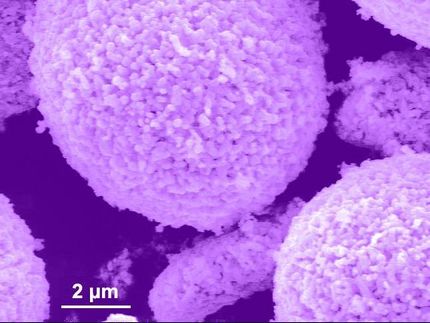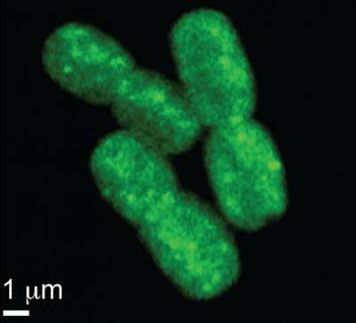The greenhouse gas that saved the world
Chemistry researchers uncover why the archean world was not frozen solid
When Planet Earth was just cooling down from its fiery creation, the sun was faint and young. So faint that it should not have been able to keep the oceans of earth from freezing. But fortunately for the creation of life, water was kept liquid on our young planet.
For years scientists have debated what could have kept earth warm enough to prevent the oceans from freezing solid. Now a team of researchers from Tokyo Institute of Technology and University of Copenhagen's department of chemistry have coaxed an explanation out of ancient rocks, as reported in issue of PNAS
A perfect greenhouse gas
"The young sun was approximately 30 percent weaker than it is now, and the only way to prevent earth from turning into a massive snowball was a healthy helping of greenhouse gas," Associate Professor Matthew S. Johnson of the Department of Chemistry at University of Copenhagen explains. And he has found the most likely candidate for an archean atmospheric blanket. Carbonyl Sulphide: A product of the sulphur disgorged during millennia of volcanic activity.
"Carbonyl Sulphide is and was the perfect greenhouse gas. Much better than Carbon Dioxide. We estimate that a blanket of Carbonyl Sulphate would have provided about 30 percent extra energy to the surface of the planet. And that would have compensated for what was lacking from the sun", says Professor Johnson.
Strange distribution
To discover what could have helped the faint young sun warm early earth, Professor Johnson and his colleagues in Tokyo examined the ratio of sulphur isotopes in ancient rocks. And what they saw was a strange signal; A mix of isotopes that couldn't very well have come from geological processes.
"There is really no process in the rocky mantle of earth that would explain this distribution of isotopes. You would need something happening in the atmosphere," says Johnson.
The question was: What.
Painstaking experimentation helped them find a likely atmospheric process. By irradiating sulphur dioxide with different wavelengths of sunlight, they observed that sunlight passing through Carbonyl Sulphide gave them the wavelengths that produced the weird isotope mix.
"Shielding by Carbonyl Sulphide is really a pretty obvious candidate once you think about it, but until we looked, everyone had missed it," says Professor Johnson, and he continues. "What we found is really an archaic analogue to the current ozone layer. A layer that protects us from ultraviolet radiation. But unlike ozone, Carbonyl Sulphide would also have kept the planet warm. The only problem is: It didn't stay warm".
Life caused ice-age
As life emerged on earth it produced increasing amounts of oxygen. With an increasingly oxidizing atmosphere, the sulphur emitted by volcanoes was no longer converted to Carbonyl Sulphide. Instead it got converted to sulphate aerosols: A powerful climate coolant. Johnson and his co-workers created a Computer model of the ancient atmosphere. And the models in conjunction with laboratory experiments suggest that the fall in levels of Carbonyl Sulphide and rise of sulphate aerosols taken together would have been responsible for creating snowball earth, the planetwide ice-age hypothesised to have taken place near the end of the Archean eon 2500 million years ago. And the implications to Johnson are alarming.
"Our research indicates that the distribution and composition of atmospheric gasses swung the planet from a state of life supporting warmth to a planet-wide ice-age spanning millions of years. I can think of no better reason to be extremely cautious about the amounts of greenhouse gasses we are currently emitting to the atmosphere".
Most read news
Other news from the department science

Get the chemical industry in your inbox
By submitting this form you agree that LUMITOS AG will send you the newsletter(s) selected above by email. Your data will not be passed on to third parties. Your data will be stored and processed in accordance with our data protection regulations. LUMITOS may contact you by email for the purpose of advertising or market and opinion surveys. You can revoke your consent at any time without giving reasons to LUMITOS AG, Ernst-Augustin-Str. 2, 12489 Berlin, Germany or by e-mail at revoke@lumitos.com with effect for the future. In addition, each email contains a link to unsubscribe from the corresponding newsletter.




























































